There's just something about mascara that works wonders for uplifting your overall appearance. This one simple makeup product can awaken your eyes and effortlessly give you a more youthful and energized look. You can get gorgeous lashes, minus the harmful chemicals with our picks for the best natural mascaras—plus what ingredients to avoid.

Getting dark, fuller, and longer lashes is an achievable beauty goal even when you ditch the chemicals. Natural mascara works just as well and it can even benefit your lashes if certain natural ingredients are used. If you're worried about costs, don't be—you'll find non-toxic mascaras in the same price range as conventional ones! Or you can make your own with natural ingredients for a fraction of the cost of commercial mascaras.
Jump to:
What should you be looking for with clean mascara? Water-based mascara is your friend! Look for plant-based ingredients, such as coconut, green tea, shea butter, cocoa butter, aloe, and essential oils. Natural and organic waxes (e.g., beeswax) are also lovely for the lashes!
Not sure which natural mascara to get? We asked makeup artist Mary Winkenweder for her picks aand tested our faves:
Overall pick
This boundary-breaking formula creates big, bold, and fluffy lashes instantly. The high tech rubber brush is designed to separate and lift every single eyelash, making application easier and more effective.
Runner up
Physicians Formula mascara has no synthetic solvents, synthetic biopolymers, synthetic preservatives, synthetic fibers, and petroleum byproducts, making it a worry-free option. It doesn't smudge, clump, or flake, which is everything we want in a mascara.
Best Splurge
"ILIA holds a steady position in the healthy cosmetics market as being a new product leader," says Winkenweder. Made from natural ingredients and free from phenoxyethanol, this mascara should suit even the most sensitive eyes, making lashes long and defined.
She recommends building volume as desired with the special bristle applicator brush. "Your lashes may be intense while you're as cool as a cucumber!" she adds.
More Clean Mascaras We Love
The nourishing formula from Pacifica is infused with coconut oil, kelp extract, and vitamin B to help hydrate each lash as it lengthens and helps strengthen.
It combines organic plant waxes with select raw minerals, which allow the formula to shape your lashes and intensify fullness, instantly adding life to your lashes without flaking, smudging, or clumping.
This mascara is colored with natural black tea leaves and infused with lash-conditioning nutrients for the perfect lashes every time. "This formula is chock full of healthy ingredients, and the specially designed applicator brush makes unique mascara applications possible," says Winkenweder.
"A natural mascara that is waterproof is valuable to anyone who likes to maintain their personal eye statement, even in the water," says Winkenweder. "The formula boasts two types of citrus oils, making it a mascara that delivers volume in wet spaces with a hint of aromatherapy."
This luxe mascara is definitely a splurge, but Winkenweder says it's totally worth it. "This product is the perfect example of someone in the mainstream cosmetic world who listened to the many cries for instant natural glam lash gratification," she says. "Daily wear can be simple glam or complex glam."
Applying Natural Mascara
Applying mascara correctly will make your eyes pop, and that's what we're all after, isn't it? Taking the time to do more than just swiping the wand over your lashes is bound to bring you better results. Once you get the hang of it, it shouldn't be difficult at all!
Curl your eyelashes. If you’re applying your makeup first thing in the morning, curl your lashes before applying any mascara. For extra hold, heat your eyelash curler with your blow dryer for a few seconds. Make sure it’s not too hot!
Curled lashes make your eyes appear more open. You can choose to curl your lashes once again after applying mascara—just make sure it's perfectly dry before you do.
Black mascara is more dramatic and noticeable than brown. Apply one coat, starting from the base, and let it dry. When it’s dry, dab more mascara on the tips of your lashes. This will make them appear longer.
Go slowly and apply it in small quantities. If you don’t, it will clump. If you do get clumps, use an eyelash brush or even a toothbrush to remove them.
Mix and match. Most mascaras are designed to give the effect of either volume, length, or curl. If you're looking for more than just one of these, you can use more than one product. Sometimes, you might like the wand from one product and the benefits of another—and that's just fine.
As far as mascara on the lower lashes, it depends on your eyes. For some eyes, it actually closes them off and makes them look smaller. For others, it creates a dramatic effect that makes the eyes stand out. You’ll have to try it to find out.
Use less product than you would on your upper lashes since you're working with fewer and shorter lashes. Just use the tip of your brush and a vertical motion to apply mascara. If you want a little more adventurous or playful look, you could use colored mascara, like dark blue, green, or purple.
Apply cake mascara. Cake mascara is popular for adding incredible volume to the eyes, making them pop, notes Winkenweder. "This is an original glam lash solution used in old films to make doe-eyed starlets unforgettable," she says. "Apply cake mascara to faux magnetic lashes before applying it directly over your natural lashes." She recommends doing this after your color statement is complete, including defining your eyeliner.
Try false lashes. Give your lashes a break from mascara, and give false lashes a shot. Practice your application technique. Apply them only to the outside half of your own lashes, and use good glue.
We're not saying you should do this every day, but for special occasions, false lashes sure look dramatic—and great in photos, too! Long-term use and overdoing it are not recommended and can cause eyelash damage, which may be irreversible.
Always remove mascara before you go to bed. Whenever you wear mascara, make sure to remove it in the evening, along with any other makeup you might be wearing.
"Your eyes also require downtime and generation time," notes Winkenweder. "Wellness for your lids, lashes, and eye area is very important."
This way, you avoid your lashes drying up and falling out, and you also avoid eye irritations. Use a gentle eye makeup remover, which you can make at home with just 3 ingredients. Or just use diluted castile soap to gently wash your eyelids and lashes for the night.
Restore with a serum. Winkenweder also recommends applying a lash serum to the lash line, which strengthens the existing natural lash line while encouraging new lash growth.
Watch out for bacteria. Although most mascaras officially have a longer shelf life, it's safest to throw away a product 3 months after opening. Each time you pull the wand out of the tube and use it, you're introducing germs from your lashes when you put it back in the tube. They can deteriorate the formulation and lead to eye infections, which is why it's better to replace mascara often.
Mascara Ingredients to Avoid
Despite the fact that this product is applied to such a vulnerable area (your eyes!), mascara has more toxic ingredients than you would imagine.
Fragrance (perfume). Not sure why mascara even needs fragrance? It's usually to give the brand a signature scent but also to mask the unpleasant smell of the ingredients. If you've ever felt like scratching your eyes after using mascara, fragrance is most likely the culprit.
Petroleum. "Some cosmetics contain dirty petroleum ingredients, and they can cause harm to your skin," warns Winkenwerder. "While petroleum is not a first choice for natural ingredients, some cosmetics do contain cleaner versions."
Parabens. Typically used to create longer shelf life, these preservatives are linked with breast cancer [source] and may even interfere with the nervous system. Like fragrance, they're also irritating, which is especially harmful (not to mention annoying) in the eye area.
Diazolidinyl urea (formaldehyde). Formaldehyde is a known carcinogen [source] used as a preservative in mascara and other beauty products. It is allowed in very low levels, but those with allergies to formaldehyde can still have reactions [source].
Thimerosal. Another preservative, thimerosal is derived from mercury and should not belong to the list of ingredients of any beauty product. Cosmetics containing thimerosal must be labeled [source]. It induces allergic reactions, and mercury can negatively affect the brain and many aspects of health [source].
Aluminum powder. Aluminum powder is regularly used in mascara to obtain certain colors, but according to the Environmental Working Group's Skin Deep database [source], it's a known nervous system toxicant.
Retinyl acetate. This synthetic form of vitamin A, used for moisturizing, is a highly unstable molecule, which is thought to cause reproductive damage and possibly lead to cancer when exposed to sunlight [source].
Coal-tar dye. Diaminobenzene, phenylenediamine, and aminophenol are all coal-tar dyes that should be avoided [source]. Used for coloring, they contain harmful heavy metals, such as lead, which can be found in kohl-containing products from other countries [source].
FAQ
Like with all natural makeup, some natural mascaras might not be as waterproof or long-lasting as traditional mascaras, but there are plenty of high-quality options available that perform well (see our list above). You may need to try a few different brands and formulas to find a natural mascara that meets your preferences.
Some natural mascaras might have a tendency to smudge or flake more easily than conventional ones. To prevent this, you can consider using a lash primer before applying mascara. You can also lightly dust your under-eye area with translucent powder to set the mascara and help prevent smudging.
While it doesn't provide the same cosmetic effect as mascara in terms of color, volume, or definition, castor oil is often considered a great alternative to mascara. When used as an eyelash serum, it can enhance the health and appearance of your natural lashes over time, making them appear thicker and longer.
You can also try making your own mascara at home using non-toxic pigments and nourishing, plant-based ingredients.
References
Haer E, et al. Minireview: parabens exposure and breast cancer. Int J Environ Res Public Health. 2022.
2. Protano C, et al. The carcinogenic effects of formaldehyde occupational exposure: a systematic review. Cancers (Basel). 2022.
3. Malinauskiene L. Formaldehyde may be found in cosmetic products even when unlabelled. Open Med (Wars). 2015.
4. Majtan J, et al. Natural and conventional cosmetics—mercury exposure assessment. Molecules. 2021.
5. Mercury poisoning linked to skin products. US Food & Drug Administration website.
6. Aluminum powder. EWG’s Skin Deep website.
7. Retinol and retinol compounds. Campaign for Safe Cosmetics website.
8. Coal tar. EWG’s Skin Deep website.
9. Lead in cosmetics. US Food & Drug Administration website.
This post was medically reviewed by Dr. Jennifer Haley, a board-certified dermatologist with extensive experience in medical, cosmetic, and surgical dermatology. Learn more about Hello Glow’s medical reviewers here. As always, this is not personal medical advice, and we recommend that you talk with your doctor.
89
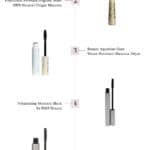
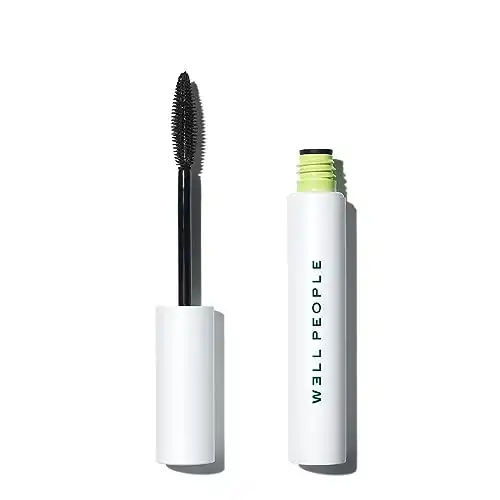
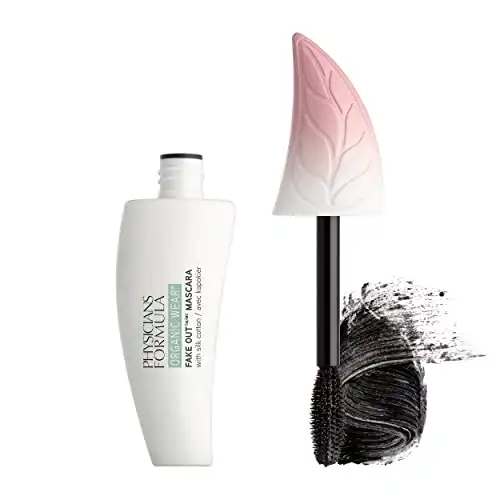
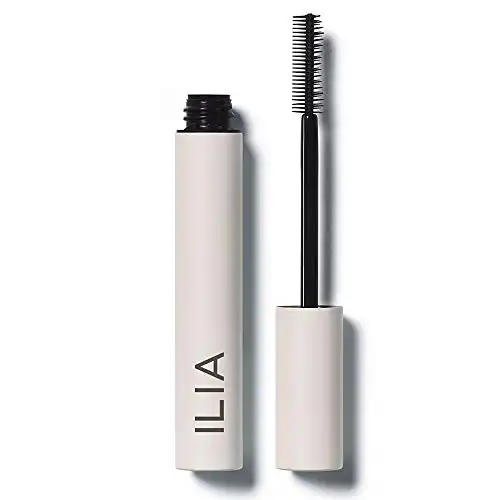

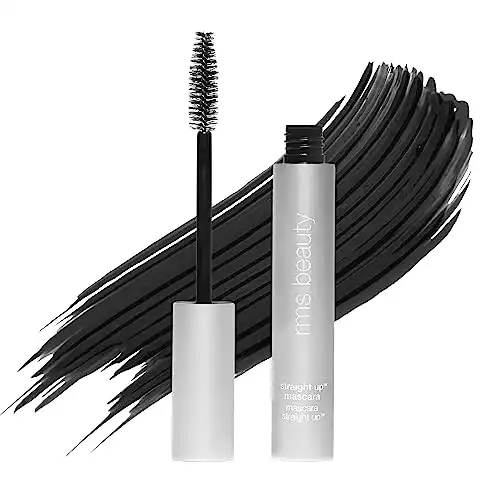

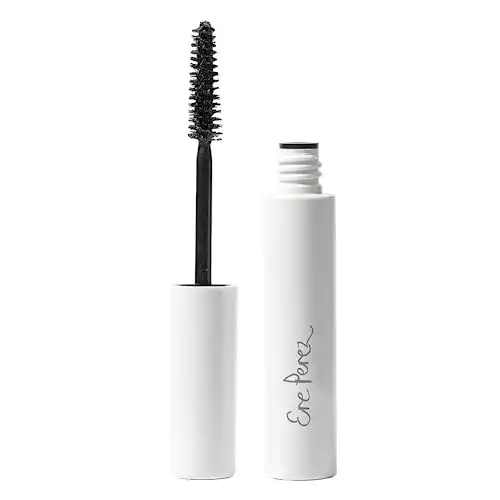
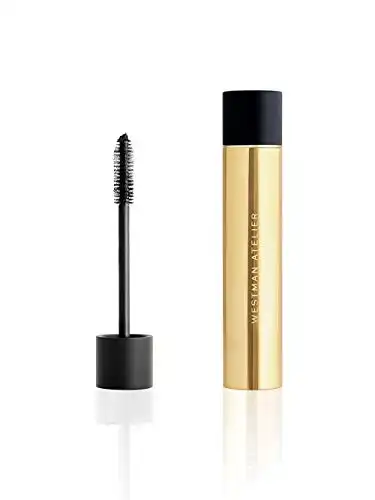
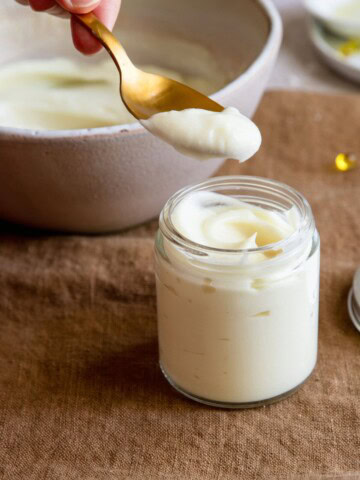
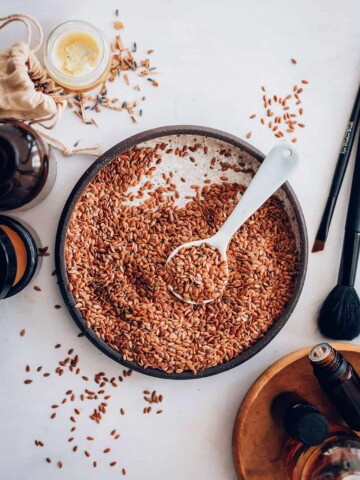
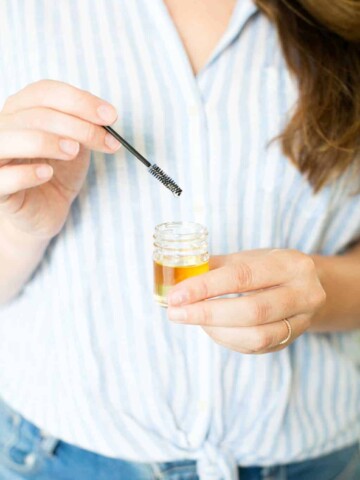
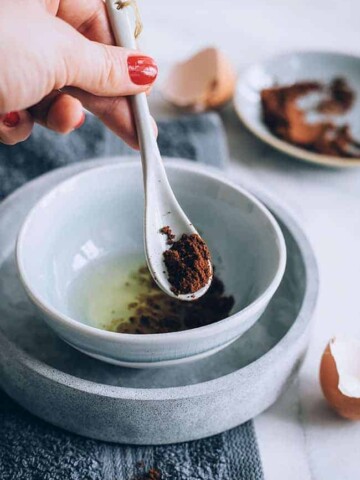
Cayla says
I adore Pacific's mascara, the Dream Big one works great especially because it has a very innovative twist for the wand.
Lexi says
I had the same experience with the physicians formula double sided mascara. I thought it was me... you're right. It's a no buy
Stephanie Gerber says
Oh, yikes, that's good to know! I've never run into that problem but thanks for the heads up!
suzi says
W3LL People's mascara is amazing!
As someone who tears a lot and suffers from a bit of oily eyelids (eeeew, I know, right) I really can attest to the efficacy of this product. TRY IT! They even offer a travel sized one so you can try it our first and save some $$ instead of purchasing the full price.
Tracy says
I use Beauty Counter mascara...the entire line is nontoxic!
Stephanie Gerber says
I love BeautyCounter! I haven't tried their mascara but I'm sure it good! Here's a link if anyone needs it:
http://www.beautycounter.com/lengthening-mascara.html
Tracy says
I use Beauty Counter mascara...Check them out! nontoxic!
Katia says
I think you read my mind! I was 100% about to try and find natural, non-toxic mascaras. I think my relationship with waterproof mascaras might be over. Time to break up. It makes my eyes itch (like you mentioned) and I have the hardest time taking it off with anything else that is natural, so I often wake up with sticky eyes. Yuck.
Thanks so much for sharing :)